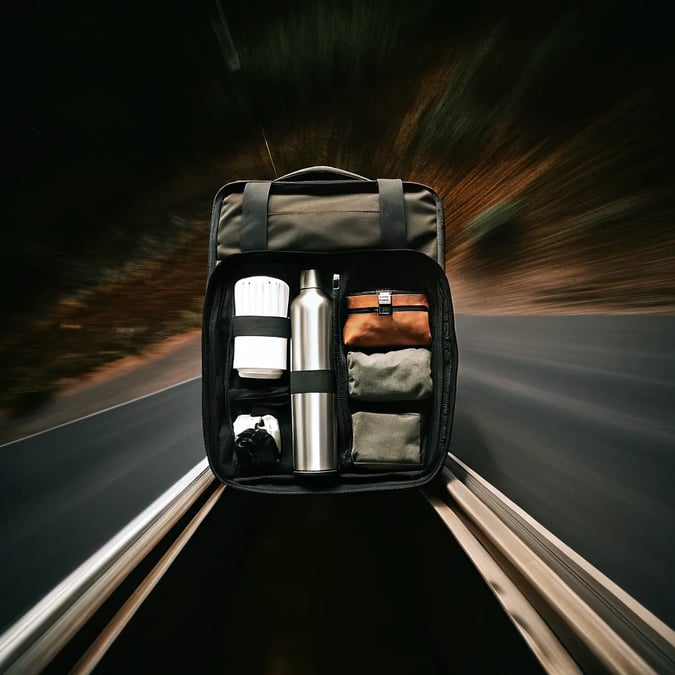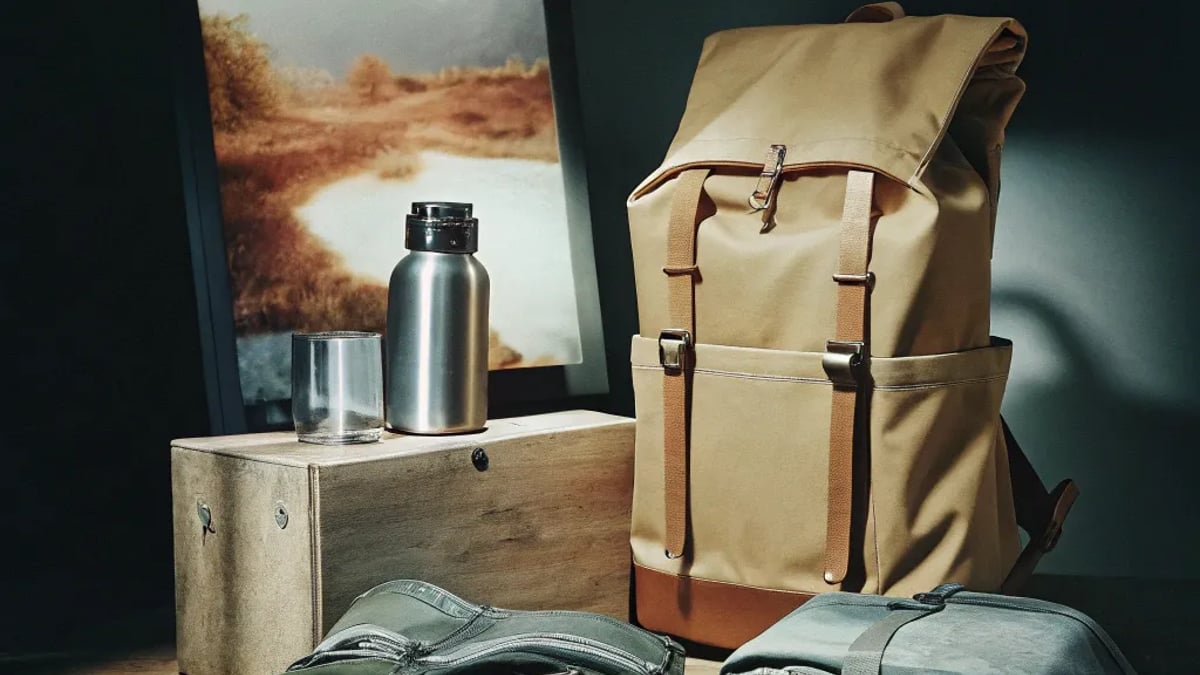
The way we pack for trips doesn't just affect our travel experience—it impacts our planet too. I've spent years refining my approach to packing, often learning the hard way when lugging too-heavy suitcases up endless European staircases or paying excess baggage fees. Sustainable travel starts before you even leave home, and thoughtful packing is your first opportunity to reduce your environmental footprint while making your journey more enjoyable.
Why Packing Light Matters for Sustainability
When I first started traveling regularly, I packed for every possible scenario—resulting in suitcases filled with unworn clothes and unnecessary items. I didn't realize that overpacking wasn't just inconvenient; it was environmentally problematic too.
Heavier bags mean vehicles consume more fuel to transport them. According to research from the International Air Transport Association, even small weight reductions across passenger luggage can lead to significant fuel savings and reduced carbon emissions when multiplied across thousands of flights. A plane carrying an extra 1,000 pounds requires approximately 53 gallons of additional fuel on a 5-hour flight.
Beyond fuel consumption, overpacking often leads to purchasing single-use items at destinations when we can't find what we need in our overstuffed bags. This creates waste and defeats the purpose of bringing so much in the first place.

"The most sustainable item is the one you already own and use repeatedly," notes Emma Matthews, sustainable tourism consultant at EcoTravel Alliance. "Packing smarter means bringing versatile items you'll actually use, not just items you might need."
The Versatility Principle: Multi-Use Items
The cornerstone of light packing is embracing versatility. When planning my trip to Portugal last spring, I limited myself to items that could serve multiple purposes.
Consider these multi-functional travel companions:
- A large scarf that works as a wrap, beach cover-up, picnic blanket, and even emergency towel
- Merino wool clothing that regulates temperature, resists odors, and can be worn multiple times
- Solid toiletries (shampoo bars, solid deodorant) that eliminate plastic packaging and liquid restrictions
My favorite versatile item is a lightweight sarong I picked up in Thailand. It's been a beach blanket, makeshift curtain, emergency towel, and even a bag for carrying market purchases when needed.
Creating a Sustainable Packing System
After forgetting essential items on too many trips (and buying replacements I didn't need), I developed a systematic approach to packing that's both sustainable and practical.
The 5-4-3-2-1 Method with a Sustainable Twist
This modified packing formula works beautifully for a week-long trip while minimizing environmental impact:
- 5 pairs of underwear and socks (consider quick-dry, sustainable materials)
- 4 tops (mix of short and long sleeves depending on climate)
- 3 bottoms (shorts, pants, skirts—whatever suits your destination)
- 2 pairs of shoes (one comfortable walking pair, one appropriate for nicer occasions)
- 1 jacket or outer layer
The key sustainability element is choosing natural, durable fabrics that require less washing and will last through many trips. Organic cotton, hemp, and responsibly-sourced wool typically have lower environmental impacts than synthetic materials, which shed microplastics when washed.
Climate-Adaptive Packing
Last year, I faced the challenge of packing for a trip that included both the cool mountains of Colorado and the beaches of Southern California. Rather than packing separate wardrobes, I used the layering technique.
Here's how to pack for multiple climates:
- Start with a base layer of lightweight, moisture-wicking items
- Add mid-layers that can be mixed and matched
- Include one packable outer layer for the coldest conditions
- Choose accessories that transform outfits (scarves, jewelry)
"The most sustainable approach to multi-climate travel is layering with versatile pieces rather than packing separate outfits for each climate," suggests travel writer Meredith Baird of Bag Lady.
What About Tech and Gear?
Our devices and travel gear have significant environmental footprints. The manufacturing of a single smartphone can generate up to 95kg of CO2 emissions, according to a study by the European Environmental Bureau.
I've found these approaches helpful:
- Bring multi-purpose devices instead of separate gadgets (smartphone instead of camera, GPS, etc.)
- Pack a single universal charger with interchangeable tips rather than multiple chargers
- Consider solar-powered options for extended trips away from power sources
- Choose durable gear that won't need replacement mid-trip
My HYDAWAY collapsible water bottle has been a game-changer—it takes almost no space when empty but eliminates the need for disposable plastic bottles. According to their website, the average traveler might use 4-5 plastic water bottles daily while sightseeing, generating significant waste over even a short trip.
How Do I Pack Toiletries Sustainably?
This is probably the question I get asked most frequently by friends planning trips. Toiletries often create the most waste during travel, but there are simple solutions.
Instead of buying travel-sized products (which use excessive packaging for small amounts of product), I:
- Transfer my regular products into reusable silicone containers
- Use solid alternatives like shampoo bars and solid deodorant
- Seek out multi-purpose products (a good oil can be moisturizer, makeup remover, and hair treatment)
When staying at hotels, I bring my own toiletries rather than using the single-use hotel options. If I do use hotel amenities, I take partially used items home to finish rather than leaving them to be discarded.
The Packing Cube Revolution
Not all organizational tools are created equal from a sustainability perspective. While plastic packing cubes are popular, I've switched to organic cotton or recycled polyester options that compress clothing without adding significant weight.
Compression techniques have allowed me to fit a week's worth of clothing into a carry-on, eliminating checked bag fees and reducing the overall weight I'm contributing to the plane's fuel consumption.
Real-World Application: Safari Packing Case Study
Packing for a safari presents unique challenges—limited space in small aircraft, variable temperatures, and specific color requirements for wildlife viewing. When planning my Tanzania trip, I was determined to pack sustainably without sacrificing necessities.
Amy from Traveling Tulls suggests focusing on neutral-colored clothing items that can be layered and mixed-and-matched. Her safari packing approach emphasizes:
- Earth-toned, lightweight clothing that can be layered
- Multi-purpose items like convertible pants/shorts
- Minimal toiletries focusing on biodegradable options
- A single versatile camera setup rather than multiple lenses
I followed similar principles and managed a two-week safari with just a backpack and small duffel, including binoculars and camera gear. The key was ruthlessly evaluating each item's versatility and necessity.
Leave No Trace: The Ultimate Sustainable Packing Philosophy
The "Leave No Trace" ethos extends beyond wilderness areas to all travel. According to the Global YO sustainable travel guide, packing light and smart is fundamental to minimizing your environmental footprint.
This philosophy means:
- Bringing only what you need
- Choosing durable items over disposables
- Planning for waste reduction while traveling
- Being prepared to bring home any waste you create in areas with limited recycling
I've found that this approach not only reduces my environmental impact but also enhances my travel experience. With less to manage, I'm more present and engaged with the destinations I visit.
Packing light and smart isn't just about sustainability—it's about freedom. When you're not weighed down by excess baggage (literal and figurative), you're free to experience more of what makes travel worthwhile. And isn't that the point?
What's your most essential sustainable packing tip? I'm always looking to improve my system for future adventures.
Tags

About Eliot Greenwood the Author
Eliot Greenwood, an avid traveler and environmental advocate, has spent over a decade exploring the world while promoting eco-friendly tourism. He specializes in guiding travelers on how to minimize their carbon footprint and engage with local communities sustainably.
Recommended Articles
The Sleek Device Physical Therapists Recommend for Mobility
Discover the Rollz Walker, a recommended mobility aid by physical therapists that enhances confidence and independence for users with mobility challenges.
New Drug Being Studied for Sleep Apnea Relief
Explore the newest advancements in sleep apnea treatments, focusing on innovative drugs AD109 and Zepbound for effective relief from this common condition.
How to Make Your Car Smell Like New Again
Learn how to restore that new car smell by eliminating odors and using effective cleaning techniques and air fresheners for a revitalized interior.
The Walking Trick That Physical Therapists Teach for Better Balance
Discover the walking trick that enhances balance and stability, recommended by physical therapists to improve coordination and prevent falls.
Why Women Over 60 Are Choosing These Glasses in 2025
Discover why women over 60 are opting for stylish, comfortable glasses in 2025, blending fashion and function for a youthful appearance.





